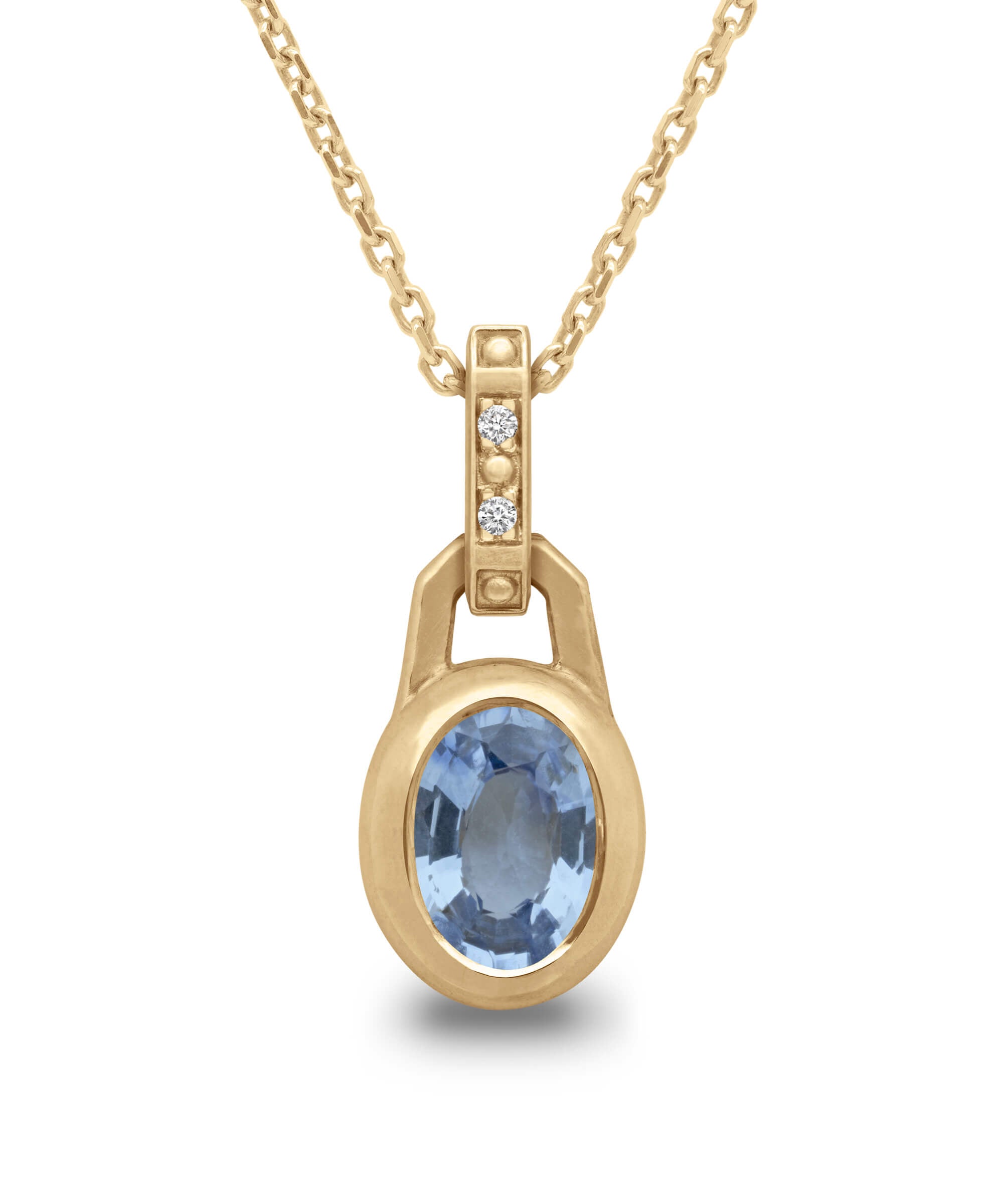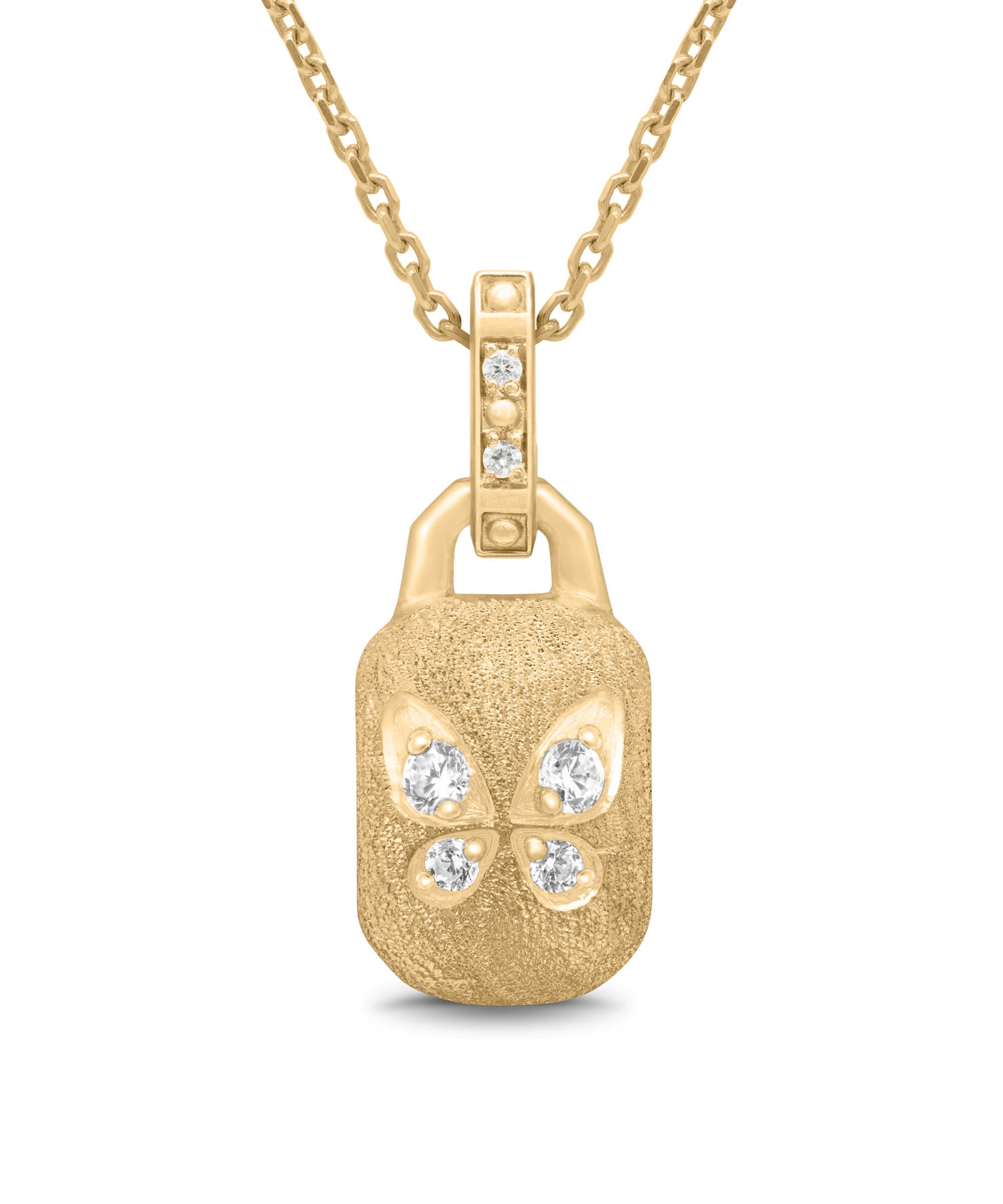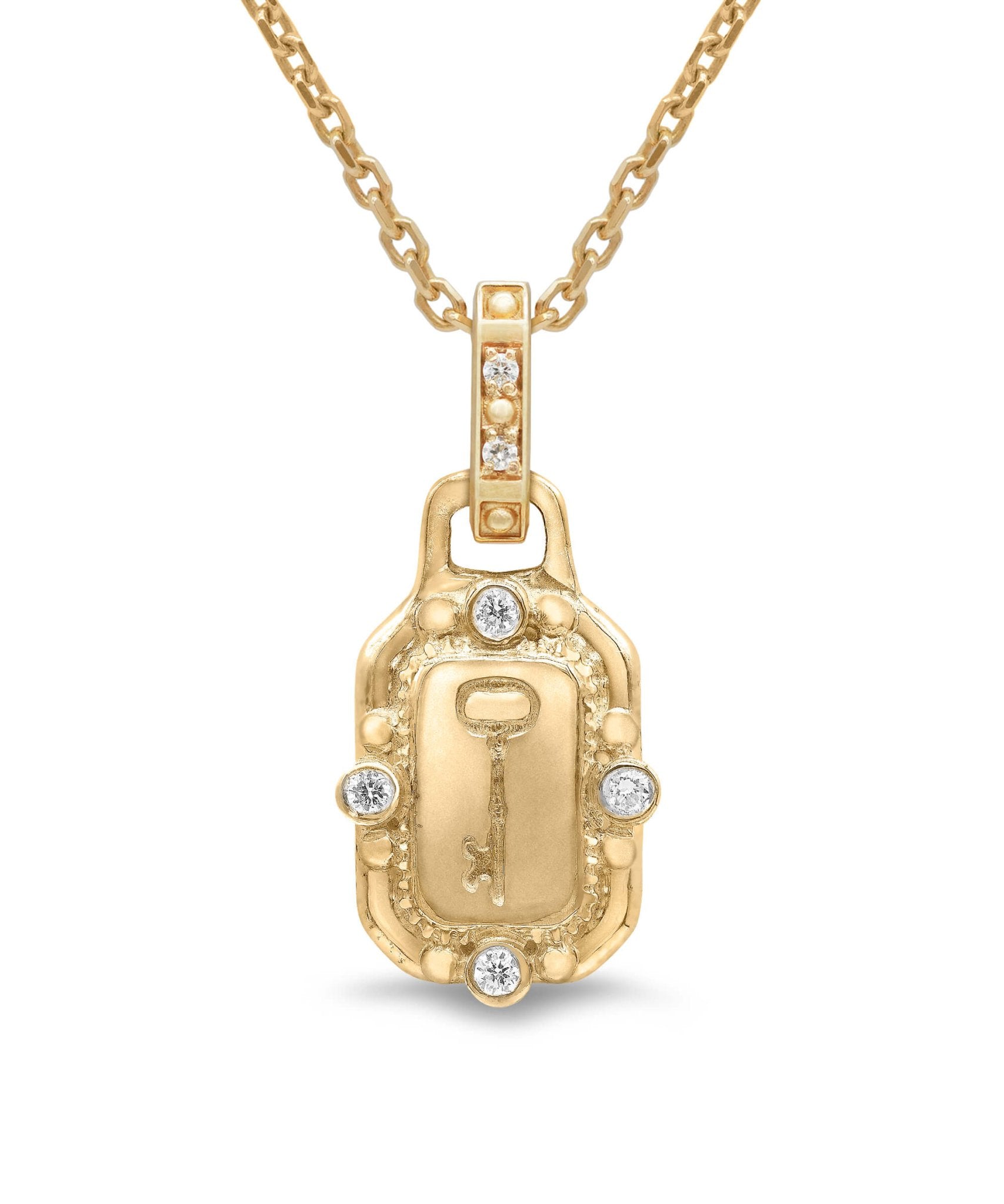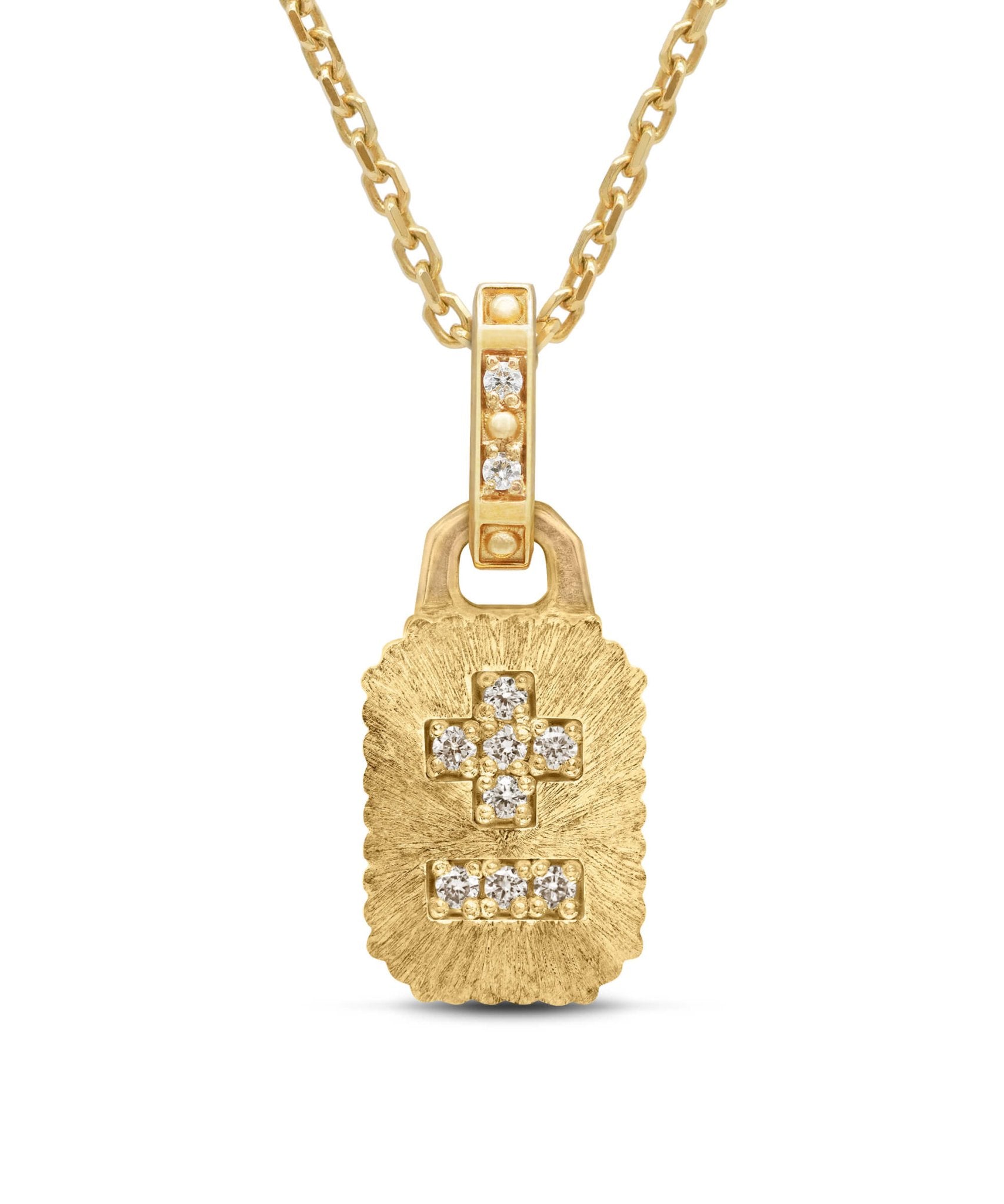AMULETHA™ JOURNAL
What is an Amulet? A Deep Dive into History, Beliefs, and Modern Relevance
June 11, 2024
In today's fast-paced and ever-evolving world, the pursuit of mindfulness, inner strength, and personal success has become more crucial than ever before. As people navigate the complexities of modern life, they increasingly seek out practices and objects that can offer them a sense of stability, purpose, and connection. One such practice that has gained renewed attention is the ancient tradition of carrying amulets. These small, magical objects, with their roots deeply embedded in history, transcend the boundaries of different cultures and epochs, weaving a rich tapestry of human belief and tradition.
From the talismans of ancient Egypt to the protective charms of medieval Europe, amulets have been revered for their perceived ability to ward off evil, attract good fortune, and provide spiritual protection. Their allure, unwavering and steadfast, continues to fascinate and provide solace to many individuals in the contemporary world. By carrying these potent symbols, people feel a sense of connection to something greater than themselves, drawing on the collective wisdom and spiritual practices of generations past. As modern society becomes more secular and technologically driven, the timeless appeal of amulets serves as a poignant reminder of our enduring need for spirituality, ritual, and a deeper understanding of the forces that shape our lives.

The face of this unique hippopotamus amulet is carved with naturalistic features, Middle Kingdom, ca. 2050-1650 BC
Understanding Amulets: Definitions and Differences
An amulet is an object believed to confer protection upon its possessor. The term 'amulet' is often used interchangeably with 'talisman' and 'medallion,' but subtle distinctions set them apart.
Amulet vs. Talisman vs. Medallion
Amulet

Egyptian amulet 1250BC-1100BC
Amulets are objects primarily designed to offer protection and ward off negative influences such as misfortune or harm. They function as passive guardians, absorbing or deflecting negative energies from the environment. The power of an amulet often comes from its material, shape, or symbols it bears, which are believed to hold protective qualities. Common examples include a rabbit's foot, which is thought to bring good luck, or a hamsa hand, a symbol prevalent in Middle Eastern cultures that is believed to protect against the evil eye. The use of amulets spans across various cultures and histories, reflecting a universal human desire for safety and security. At AMULETHA™, we celebrate the amulet's ability to empower individuals by providing a sense of protection and peace.
Talisman

Magical gold talisman with a special and powerful healing crystal
Talismans differ from amulets in that they are considered active objects imbued with specific powers intended to bring good luck or achieve a particular goal. They are often crafted with inscriptions, symbols, or specific designs that enhance their intended purpose. For example, a four-leaf clover is widely regarded as a symbol of good luck, while a horseshoe is believed to attract good fortune and positive energies. Talismans are used not only for protection but also for attracting desired outcomes, such as success, love, or health. The belief in the power of talismans is rooted in their intentional creation and use, making them powerful tools for personal empowerment and goal achievement. At AMULETHA™, we deliver high-quality talismans to help you become luckier, think positively, and achieve all your goals. Discover the potential within you with AMULETHA™.
Medallion

Byzantine medallion from Archaeological Museum Istanbul
Medallions are versatile and decorative objects, typically worn around the neck, that can function as either an amulet or a talisman depending on the wearer's intention. They are often crafted with intricate designs, religious motifs, or cultural symbols. For instance, a medallion featuring a saint's image in Christianity can serve as a protective amulet, while a yin-yang symbol in Taoism may be used as a talisman to attract balance and harmony. Medallions combine beauty with purpose, allowing the wearer to carry their chosen symbol of protection, luck, or personal significance close to their heart. Medallions from AMULETHA™ combine beauty with purpose, allowing the wearer to carry their chosen symbol of protection, luck, or personal significance close to their heart.
Differences and Commonalities
While the lines between amulets, talismans, and medallions can sometimes blur, their key differences lie in their intended use and function. Amulets are passive protectors, shielding the wearer from negative influences and misfortune. Talismans are active agents, designed to attract positive outcomes and help achieve specific goals. Medallions serve a dual purpose, functioning as either an amulet or a talisman based on the wearer’s intention, and often feature significant decorative and symbolic elements.
Despite these differences, all three objects share commonalities in their roles as sources of empowerment and personal significance. They reflect a universal human desire to harness positive energies and protection in our lives.
The Esoteric and Self-Belief Perspectives
Amulets straddle the line between esoteric traditions and modern self-belief systems, providing a fascinating insight into human psychology and culture.
Esoteric Perspective
Historically, amulets have been profoundly interwoven with esoteric traditions, serving as powerful symbols of protection, health, and spiritual significance. In ancient Egypt, for instance, amulets played a crucial role in funerary practices, believed to safeguard the deceased in the afterlife. The Eye of Horus, a prominent Egyptian amulet, was revered for its protective qualities and its association with health and restoration. Similarly, the scarab beetle amulet symbolized rebirth and transformation, embodying the cycle of life and death.
In medieval Europe, amulets were cherished for their perceived ability to shield individuals from various threats, including witchcraft and disease. These amulets were often intricately inscribed with holy texts or adorned with magical symbols, enhancing their protective powers. The use of amulets during this period was deeply rooted in the belief that these objects could harness divine or supernatural forces, offering a tangible connection to higher realms of protection and healing.
Across different cultures and eras, amulets have been esteemed not only for their physical attributes but also for their spiritual and metaphysical significance. They have been crafted from a variety of materials, including precious metals, stones, and organic substances, each chosen for its unique properties and symbolic meaning. Whether worn as jewelry, carried as talismans, or placed in sacred spaces, amulets have consistently been valued as conduits of positive energy and spiritual fortification.
The enduring legacy of amulets highlights their importance in the human quest for safety, health, and spiritual well-being. These small yet potent objects continue to captivate and inspire, reflecting a universal desire to connect with forces greater than ourselves and to seek protection in an ever-changing world.
Self-Belief Perspective
In contemporary times, the esoteric aspect of amulets has melded seamlessly with modern self-help and mindfulness practices. This fusion reflects a broader trend where ancient traditions are repurposed to suit contemporary needs and lifestyles. Amulets, once solely regarded as objects with mystical properties, are now integrated into daily routines as tools for personal development and emotional well-being.
The belief in an amulet's power often lies within the wearer, fostering a sense of control and confidence. This psychological empowerment is crucial in a world where individuals seek to navigate the complexities of modern life. The amulet serves as a tangible manifestation of one's intentions and aspirations. By wearing an amulet, an individual can have a constant, physical reminder of their goals and inner strength, reinforcing their commitment to personal growth and resilience.
As the world has grown safer physically due to advancements in technology and healthcare, it has simultaneously become more challenging mentally. The pressures of modern life, including the fast pace of change, increased connectivity, and the constant bombardment of information, have led to heightened levels of stress and anxiety. In response, people are increasingly turning to amulets for mental and emotional support, seeking solace in their symbolic significance.
For instance, a crystal pendant might serve not only as a beautiful accessory but also as a source of calming energy and a reminder to stay grounded. Crystals are believed to possess various metaphysical properties, with different types offering specific benefits such as protection, healing, or enhanced intuition. By wearing a crystal pendant, individuals can feel a sense of connection to these energies, helping them to maintain focus, reduce stress, and cultivate a positive mindset.
Moreover, amulets can play a role in mindfulness practices by encouraging present-moment awareness. When someone touches or looks at their amulet, it can prompt them to pause, take a deep breath, and re-center themselves amidst the chaos of daily life. This simple act can enhance mindfulness, promoting a more balanced and reflective approach to life's challenges.
In brief, the integration of amulets into modern self-help and mindfulness practices highlights their enduring relevance and adaptability. By serving as symbols of inner strength, reminders of personal goals, and sources of mental and emotional support, amulets continue to provide meaningful benefits to individuals navigating the complexities of contemporary life.
Origins and Evolution: A Historical Overview
The history of amulets is as diverse as the cultures that have embraced them. These small objects, often imbued with spiritual or magical significance, have been used throughout history for protection, good luck, and various other purposes. Let's explore their significance across various ancient civilizations in greater detail.
Mesopotamia (4000-3500 B.C.)

The image shows a selection of seals found during the excavations in 2013

Ancient Assyrian royal palace at Nineveh on the Tigris River, destroyed in 612 BC. Hand-colored woodcut
In Mesopotamia, one of the earliest known civilizations, amulets were an integral part of daily life, reflecting the society's profound beliefs in supernatural forces. The Mesopotamians believed that these objects could protect them from evil spirits, diseases, and bad luck. Amulets were made from a variety of materials including precious stones, metals, and carved symbols. For instance, the lion-headed eagle amulet, known as "Imdugud" or "Anzu," symbolized power and protection. This creature was considered a divine entity capable of warding off malevolent forces. These amulets were often worn around the neck, placed in homes, or kept in temples to provide continuous protection. The craftsmanship of these amulets also reflected the high level of artistry in Mesopotamian culture, with intricate designs and detailed carvings that demonstrated both their aesthetic and functional importance.
Ancient Egypt (3100 B.C.)

Amulets in ancient Egypt
The Egyptians' use of amulets is one of the most well-documented in history, showcasing their sophisticated understanding of symbolism and magic. They believed that amulets held magical properties that could protect both the living and the dead. Amulets were commonly placed within mummy wrappings to ensure the deceased's safe journey to the afterlife, a practice that underscored their importance in Egyptian burial customs. Among the most notable amulets were the ankh, symbolizing eternal life, and the djed pillar, representing stability. Another significant amulet was the scarab beetle, associated with the sun god Ra and symbolizing rebirth and regeneration. The Egyptians meticulously crafted these amulets from materials like gold, turquoise, and lapis lazuli, often inscribing them with spells and invocations from the Book of the Dead to enhance their protective powers. The use of amulets was widespread, with different types serving specific purposes, such as health, protection, or success in various endeavors.
Ancient India (3300 B.C.)

Amulets in ancient India
In ancient India, amulets known as 'yantras' were integral to spiritual and religious practices, reflecting the deep connection between material objects and metaphysical beliefs. Yantras are geometric designs believed to harness divine energies, providing the wearer with protection, prosperity, and spiritual growth. These designs, often complex and precise, were not only worn as amulets but also used in rituals and meditation practices. Additionally, rudraksha beads, considered sacred to Lord Shiva, were worn for their supposed ability to ward off negative influences and bring peace. These beads, which grow on the Elaeocarpus ganitrus tree, were strung into necklaces and used during meditation and prayers, believed to align the mind and body and create a shield against evil forces. The ancient texts, including the Puranas and Upanishads, describe rudraksha as having the power to enhance spiritual growth, provide mental clarity, and protect against various forms of harm. The reverence for these amulets underscores the holistic approach to health and spirituality in ancient Indian culture.
Ancient China (2000 B.C.)

Pig dragon Hongshan amulet in ancient China (2000 B.C.)
Chinese culture has a long tradition of using amulets, with jade being one of the most cherished materials due to its perceived spiritual and protective qualities. Jade, often referred to as the "Stone of Heaven," was believed to have protective and healing properties. It was commonly carved into symbols such as dragons, phoenixes, and the "pi xiu," a mythical creature believed to attract wealth and good fortune. The pi xiu, in particular, was thought to guard against misfortune and bring prosperity to its owner. Jade amulets were not only worn as personal adornments but also used in ceremonies and rituals to honor ancestors and deities. The intricate carvings on these amulets demonstrated the high level of skill in Chinese craftsmanship and the cultural importance of symbolism and mythological creatures. The use of amulets in ancient China was deeply intertwined with “Daoist” and “Buddhist” practices, where they played a significant role in rituals aimed at maintaining harmony and balance in both personal and communal life.
Ancient Peru (1200 B.C.)

Amulets in ancient Peru
The indigenous people of ancient Peru crafted amulets from animal bones and teeth, believing they held the animal's spirit and power, reflecting their animistic beliefs and close relationship with nature. These amulets were used in rituals to ensure successful hunts and protection from harm. Shamans and spiritual leaders often wore these amulets, invoking the strength and attributes of the animals they represented. For instance, amulets made from jaguar teeth were believed to bestow courage and hunting prowess upon the wearer. The use of such amulets highlights the deep connection these cultures had with nature and the animal kingdom, seeing them as partners in survival and spiritual practice. The intricate designs and materials used in these amulets also demonstrate the craftsmanship and artistic skills of ancient Peruvian cultures, as well as their sophisticated understanding of symbolism and spiritual practices.
Ancient Mesoamerica (1200 B.C.)

Amulets in ancient Mesoamerica
In Mesoamerica, amulets played a crucial role in both religious and everyday life, serving as powerful symbols of protection and divine favor. The Aztecs, for example, used obsidian knives and jade carvings as protective amulets. The feathered serpent deity, Quetzalcoatl, was a common motif, symbolizing fertility, creation, and renewal. Amulets depicting Quetzalcoatl were believed to bring blessings and protection from the gods. Additionally, the Maya and Olmec civilizations also used amulets made from jade, shell, and bone, often inscribed with glyphs and images of deities. These amulets were not only worn but also placed in homes and ceremonial sites to invoke divine favor. The craftsmanship involved in creating these amulets was highly sophisticated, reflecting the importance of these objects in Mesoamerican culture. The use of amulets in these societies was closely linked to their cosmological beliefs and rituals, highlighting the integral role of spiritual objects in maintaining social and spiritual order.
Native Americans

Amulets among Native Americans
Native American tribes have a rich tradition of amulets, often made from natural materials like feathers, animal teeth, and stones, reflecting their deep connection to the natural world. Dreamcatchers, a well-known example, were hung above beds to protect sleepers from bad dreams and negative spirits. According to legend, the web of the dreamcatcher filters out bad dreams, allowing only good ones to pass through to the sleeper. Other amulets included medicine pouches filled with herbs, stones, and other sacred items, which were worn for protection and spiritual guidance. These amulets were deeply personal, often created by individuals or shamans based on visions and dreams, and carried significant cultural and spiritual meanings. The intricate designs and materials used in these amulets demonstrate the craftsmanship and artistic skills of Native American cultures, as well as their sophisticated understanding of symbolism and spiritual practices. The use of amulets in Native American culture underscores the importance of maintaining a harmonious relationship with the natural world and the spiritual realm, reflecting their holistic approach to health and spirituality.
Materials and Craftsmanship: The Essence of Amulets
The creation of amulets is an intricate art that intertwines cultural heritage, symbolic meaning, and meticulous craftsmanship. The materials used to create amulets are as varied as their cultural origins, with each material carefully selected for its unique properties and the symbolism it carries. These materials not only enhance the amulet’s aesthetic appeal but also imbue it with specific powers and meanings that are deeply rooted in the traditions and beliefs of the culture from which it originates.
Animal Components
- Bear Claws and Teeth
- Rabbit's Foot:
Metals
- Gold:
- Silver:
- Cultural Examples: In European folklore, silver was believed to repel evil creatures, such as werewolves and vampires. In Islamic tradition, silver rings inscribed with Quranic verses were used for protection and spiritual benefits.
Stones and Crystals
- Amethyst:
- Jade:
Organic Materials
-Rudraksha Beads:
-Feathers:
Each of these materials carries a rich history and deep symbolic meaning, reflecting the diverse ways in which different cultures have sought protection, healing, and spiritual connection through their use.
Amulets in Modern Times: A Blend of Tradition and Contemporary Beliefs
In today's world, amulets continue to be a source of comfort and inspiration. They have adapted to modern aesthetics while retaining their ancient significance. These objects, traditionally believed to provide protection and bring good fortune, now play versatile roles in contemporary society, reflecting both personal and collective beliefs.
Personal Empowerment

HATMEHIT AMULET from Hood museum
Modern amulets are often used as tools for personal empowerment. They serve as physical reminders of personal goals and aspirations, encouraging individuals to stay focused and positive. For instance, a simple necklace with the word "Strength" or a symbol like an arrow can serve as a daily motivator. Such amulets are often worn during challenging times to boost confidence and resilience.
Examples of Use:
- Motivational Jewelry: Necklaces, bracelets, or rings inscribed with words like "Courage," "Hope," or "Dream" act as constant reminders of one's personal journey.
- Symbolic Charms: Amulets shaped like hearts, arrows, or infinity symbols are popular choices for those looking to embody specific qualities or beliefs.
- Customized Pieces: Individuals often create personalized amulets that combine meaningful symbols and words tailored to their unique aspirations and challenges.
Fashion and Symbolism

Heart Scarab of Hatnefer amulet
Amulets have also found their place in fashion, blending style with symbolism. Jewelry designers create pieces that are both aesthetically pleasing and spiritually meaningful. This trend allows people to express their beliefs and values through their fashion choices, making amulets a significant part of contemporary style.
Examples of Use:
- Designer Collections: Many fashion brands now include amulets in their collections, offering pieces that range from minimalist designs with subtle charms to more elaborate, statement pieces.
- Cultural Symbols: Amulets featuring cultural or spiritual symbols, such as the Hamsa hand, the Tree of Life, or mandalas, are incorporated into necklaces, bracelets, and earrings.
- Personalized Fashion: Custom jewelry services allow individuals to design their amulets with specific symbols and gemstones, aligning their accessories with personal beliefs and aesthetics.
Mindfulness and Healing

Healing amulet carved in Intaglio (Incised)
The rise of mindfulness practices has brought renewed interest in the healing properties of amulets. Crystals and gemstones are particularly popular, used in meditation and healing rituals. These amulets are believed to channel specific energies that promote physical, emotional, and spiritual well-being.
Examples of Use:
- Healing Crystals: Amulets made from crystals like rose quartz, believed to promote love and healing, or black tourmaline, used for protection, are commonly incorporated into daily mindfulness practices.
- Meditation Tools: Many people use crystal amulets during meditation sessions to enhance focus and relaxation. For example, holding a clear quartz pendant is thought to amplify intention setting.
- Energy Balancing: Wearing gemstone amulets is a popular method for balancing energy centers (chakras) in the body. Amulets with amethyst are used to calm the mind, while those with citrine are worn to boost energy and creativity.
Conclusion
The enduring allure of amulets lies in their ability to bridge the gap between the physical and the metaphysical, the past and the present. From ancient talismans carved from animal bones to contemporary jewelry adorned with crystals, amulets continue to evolve while maintaining their core purpose: to protect, empower, and inspire. As we navigate the complexities of modern life, these small, symbolic objects offer a tangible connection to our innermost desires and beliefs, reminding us that sometimes, the most powerful forces are the ones we carry within.































